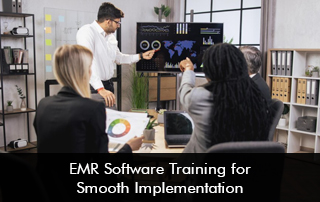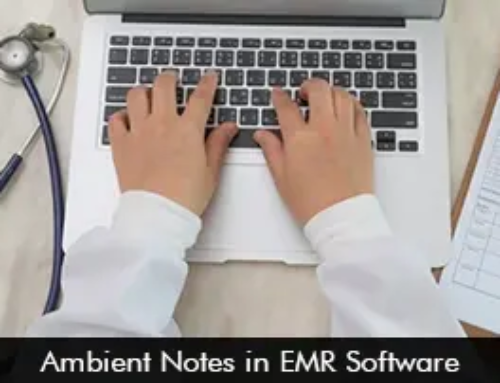EMR software stores all patient information digitally, including medical history, test results, medications, and more. This digital storage makes patient data easy to access and reduces the need for paper records. For doctors, EMR software simplifies the process of keeping track of patient health and helps improve care quality. It also makes sharing patient data between healthcare providers easier and safer, improving coordination across teams and departments.
Despite these advantages, EMR systems are complex. Healthcare providers, administrators, and even non-medical staff need thorough training to use them effectively. Proper training ensures that everyone can navigate the software, access data securely, and use all features optimally.
Why Training is Necessary for EMR Software Implementation
Introducing EMR software without adequate training can lead to confusion and mistakes. A learning curve exists, as EMR systems differ from other tools commonly used in healthcare settings. Training prepares staff to understand the software’s features and use it confidently. Without this preparation, even the best EMR systems can disrupt workflows, leading to frustration and inefficiency.
Training also reduces the likelihood of errors in handling patient data. Patient information is sensitive, and mistakes in data entry or retrieval can have serious consequences. By training staff before implementing EMR software, healthcare practices can create a smoother transition and prevent common problems.
Training Non-Medical Staff
The Role of Non-Medical Staff in EMR Software Usage
When people think about EMR training, they often focus on doctors and nurses. But non-medical staff also need training. Receptionists, administrative assistants, and billing staff all use EMR software for various tasks, like scheduling appointments, updating records, and handling billing information. These roles are critical, as any mistakes can disrupt patient care and affect the clinic’s reputation.
Training Needs for Non-Medical Staff
Non-medical staff may not be as familiar with medical terminology or specific EMR functions as healthcare providers are. Training for non-medical staff should focus on basic navigation, data entry, and security practices. By teaching them to use the EMR software properly, clinics can make sure all staff members contribute to a well-organized and efficient environment. Additionally, training reduces stress for non-medical staff by building their confidence in using a tool essential to their daily responsibilities.
Benefits of EMR Software Training: Efficient Practices
Faster and More Accurate Data Entry
With EMR training, healthcare staff can enter patient data more quickly and accurately. Training helps them understand shortcuts, common data entry errors, and best practices. Faster data entry saves time and helps providers access up-to-date patient information, leading to better treatment decisions.
Enhanced Patient Safety
EMR systems are designed to improve patient safety by keeping accurate records. But untrained staff may not know how to use features like alerts for drug allergies or interactions. Training ensures that everyone can use these safety features effectively. By avoiding common errors and following best practices, trained staff contribute to safer healthcare practices.
Improved Team Coordination
When all staff members understand how to use EMR software, it improves teamwork and coordination. Doctors, nurses, and administrative staff can quickly access and share patient information without delays. This smooth flow of information enhances the entire healthcare experience for patients, making it faster and more convenient.
Better Compliance with Regulations
Healthcare is a highly regulated field, and there are strict laws regarding patient information. EMR training helps staff understand compliance rules and protect patient privacy. By following proper procedures, trained staff can reduce the risk of costly legal issues for their healthcare practice.
Key Steps to Effective EMR Software Training
1. Customized Training for Different Roles
Each role in a healthcare facility has unique needs when using EMR software. Doctors need training on clinical features, while non-medical staff may need to focus on scheduling and billing. Customizing training for each role ensures everyone learns what is most relevant to them.
2. Hands-On Practice
The best way to learn EMR software is through hands-on practice. By using the software in real-life scenarios, staff can get comfortable with it. This practice helps build confidence and prepares them to handle various situations they may encounter.
3. Continuous EMR Software Learning and Support
After initial training, continuous support is essential. EMR systems may update over time, and new features may be introduced. Providing ongoing learning opportunities ensures that staff keep up with these changes and continue to use the software efficiently.








